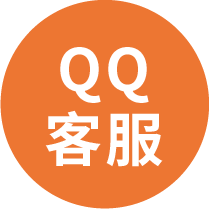BIN1 (NM_139351) Human Untagged Clone
CAT#: SC100091
BIN1 (untagged)-Human bridging integrator 1 (BIN1), transcript variant 10
CN¥ 5,488.00
Product images

Specifications
| Product Data | |
| Type | Human Untagged Clone |
| Tag | Tag Free |
| Synonyms | AMPH2; AMPHL; CNM2; SH3P9 |
| Vector | pCMV6-XL5 |
| E. coli Selection | Ampicillin (100 ug/mL) |
| Mammalian Cell Selection | None |
| Sequence Data |
>NCBI ORF sequence for NM_139351, the custom clone sequence may differ by one or more nucleotides
ATGGCAGAGATGGGCAGTAAAGGGGTGACGGCGGGAAAGATCGCCAGCAACGTGCAGAAGAAGCTCACCC GCGCGCAGGAGAAGGTTCTCCAGAAGCTGGGGAAGGCAGATGAGACCAAGGATGAGCAGTTTGAGCAGTG CGTCCAGAATTTCAACAAGCAGCTGACGGAGGGCACCCGGCTGCAGAAGGATCTCCGGACCTACCTGGCC TCCGTCAAAGCCATGCACGAGGCTTCCAAGAAGCTGAATGAGTGTCTGCAGGAGGTGTATGAGCCCGATT GGCCCGGCAGGGATGAGGCAAACAAGATCGCAGAGAACAACGACCTGCTGTGGATGGATTACCACCAGAA GCTGGTGGACCAGGCGCTGCTGACCATGGACACGTACCTGGGCCAGTTCCCCGACATCAAGTCACGCATT GCCAAGCGGGGGCGCAAGCTGGTGGACTACGACAGTGCCCGGCACCACTACGAGTCCCTTCAAACTGCCA AAAAGAAGGATGAAGCCAAAATTGCCAAGGCCGAGGAGGAGCTCATCAAAGCCCAGAAGGTGTTTGAGGA GATGAATGTGGATCTGCAGGAGGAGCTGCCGTCCCTGTGGAACAGCCGCGTAGGTTTCTACGTCAACACG TTCCAGAGCATCGCGGGCCTGGAGGAAAACTTCCACAAGGAGATGAGCAAGCTCAACCAGAACCTCAATG ATGTGCTGGTCGGCCTGGAGAAGCAACACGGGAGCAACACCTTCACGGTCAAGGCCCAGCCCAGTGACAA CGCGCCTGCAAAAGGGAACAAGAGCCCTTCGCCTCCAGATGGCTCCCCTGCCGCCACCCCCGAGATCAGA GTCAACCACGAGCCAGAGCCGGCCGGCGGGGCCACGCCCGGGGCCACCCTCCCCAAGTCCCCATCTCAGA GCTCTCTTCCTGCTGTCGTGGTGGAGACCTTCCCAGCAACTGTGAATGGCACCGTGGAGGGCGGCAGTGG GGCCGGGCGCTTGGACCTGCCCCCAGGTTTCATGTTCAAGGTACAGGCCCAGCACGACTACACGGCCACT GACACAGACGAGCTGCAGCTCAAGGCTGGTGATGTGGTGCTGGTGATCCCCTTCCAGAACCCTGAAGAGC AGGATGAAGGCTGGCTCATGGGCGTGAAGGAGAGCGACTGGAACCAGCACAAGGAGCTGGAGAAGTGCCG TGGCGTCTTCCCCGAGAACTTCACTGAGAGGGTCCCATGA |
| Restriction Sites | NotI-NotI |
| ACCN | NM_139351 |
| Insert Size | 2000 bp |
| OTI Disclaimer | Due to the inherent nature of this plasmid, standard methods to replicate additional amounts of DNA in E. coli are highly likely to result in mutations and/or rearrangements. Therefore, OriGene does not guarantee the capability to replicate this plasmid DNA. Additional amounts of DNA can be purchased from OriGene with batch-specific, full-sequence verification at a reduced cost. Please contact our customer care team at custsupport@origene.com or by calling 301.340.3188 option 3 for pricing and delivery. The molecular sequence of this clone aligns with the gene accession number as a point of reference only. However, individual transcript sequences of the same gene can differ through naturally occurring variations (e.g. polymorphisms), each with its own valid existence. This clone is substantially in agreement with the reference, but a complete review of all prevailing variants is recommended prior to use. More info |
| Product Components | The ORF clone is ion-exchange column purified and shipped in a 2D barcoded Matrix tube containing 10ug of transfection-ready, dried plasmid DNA (reconstitute with 100 ul of water). |
| Reconstitution | 1. Centrifuge at 5,000xg for 5min. 2. Carefully open the tube and add 100ul of sterile water to dissolve the DNA. 3. Close the tube and incubate for 10 minutes at room temperature. 4. Briefly vortex the tube and then do a quick spin (less than 5000xg) to concentrate the liquid at the bottom. 5. Store the suspended plasmid at -20°C. The DNA is stable for at least one year from date of shipping when stored at -20°C. |
| Note | Plasmids are not sterile. For experiments where strict sterility is required, filtration with 0.22um filter is required. |
| Reference Data | |
| RefSeq | NM_139351.1, NP_647601.1 |
| RefSeq Size | 2134 bp |
| RefSeq ORF | 1230 bp |
| Locus ID | 274 |
| UniProt ID | O00499 |
| Domains | SH3, BAR, BAR |
| Gene Summary | This gene encodes several isoforms of a nucleocytoplasmic adaptor protein, one of which was initially identified as a MYC-interacting protein with features of a tumor suppressor. Isoforms that are expressed in the central nervous system may be involved in synaptic vesicle endocytosis and may interact with dynamin, synaptojanin, endophilin, and clathrin. Isoforms that are expressed in muscle and ubiquitously expressed isoforms localize to the cytoplasm and nucleus and activate a caspase-independent apoptotic process. Studies in mouse suggest that this gene plays an important role in cardiac muscle development. Alternate splicing of the gene results in several transcript variants encoding different isoforms. Aberrant splice variants expressed in tumor cell lines have also been described. [provided by RefSeq, Mar 2016] Transcript Variant: This variant (10) lacks six in-frame exons in the coding region, compared to variant 1. Isoform 10, also called BIN1-10-13, is shorter than isoform 1 and is ubiquitously expressed. |
Documents
| Product Manuals |
| FAQs |
| SDS |
Resources
Other Versions
| SKU | Description | Size | Price |
|---|---|---|---|
| RC223609 | BIN1 (Myc-DDK-tagged)-Human bridging integrator 1 (BIN1), transcript variant 10 |
CN¥ 5,856.00 |
|
| RC223609L1 | Lenti-ORF clone of BIN1 (Myc-DDK-tagged)-Human bridging integrator 1 (BIN1), transcript variant 10 |
CN¥ 8,256.00 |
|
| RC223609L2 | Lenti-ORF clone of BIN1 (mGFP-tagged)-Human bridging integrator 1 (BIN1), transcript variant 10 |
CN¥ 5,890.00 |
|
| RC223609L3 | Lenti-ORF clone of BIN1 (Myc-DDK-tagged)-Human bridging integrator 1 (BIN1), transcript variant 10 |
CN¥ 5,890.00 |
|
| RC223609L4 | Lenti-ORF clone of BIN1 (mGFP-tagged)-Human bridging integrator 1 (BIN1), transcript variant 10 |
CN¥ 5,890.00 |
|
| RG223609 | BIN1 (tGFP-tagged) - Human bridging integrator 1 (BIN1), transcript variant 10 |
CN¥ 7,456.00 |


 United States
United States
 Germany
Germany
 Japan
Japan
 United Kingdom
United Kingdom
 China
China
